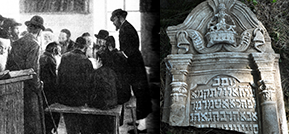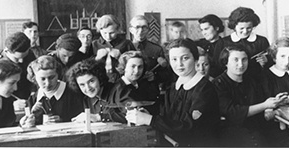The local Jewish community did not recover in the interwar period. Many local Jews left the town. Those who stayed in Solotvin were supported by the Joint Distribution Committee and relatives from abroad. The society for free credit "Gmilut Hasadim" (Gmah) was established in 1929. However, it ceased to exist after four years because of economic difficulties (Pinkas Kehilot, 350).
Jewish communal and political life was revived after the World War I. This revival included a Hebrew school that was reestablished in 1922, and the "Ezra" (Help) Society which was created in 1928 (Pinkas Kehilot, 350).
A branch of the left-wing Zionist party Hitahdut appeared in 1923, and it sponsored a Zionist youth organization Gordoniya (Pinkas Kehilot, 350). The Zionist movement was very strong in Solotwin and the majority of Jews elected to the municipality in 1927 and 1929 were Zionists (Pinkas Kehilot, 350). Among the Zionist parties the most influential was Hitahdut, which received the majority of votes, 171 out of 209, in the elections to the nineteenth Zionist Congress in 1935 (Pinkas Kehilot, 350).
In the interwar period, Jewish children were also enrolled in the Polish school, the new building for which was built at expense of a local Jewish donor, the oil businessmen Kaufmann in 1931 (link).
The interethnic tensions were influenced by economic competition throughout the interwar period. In 1924, a Jewish shoemaker and his wife from a village next to Solotvin were killed by peasants when they came to get payment for their work (Pinkas Kehilot, 350). In 1937, a riot broke out in Solotwin as the result of a conflict between a Jewish merchant and a peasant. The riot was suppressed by the authorities (Pinkas Kehilot, 350).
The head of the community was Meir Haller; he ruled the community in an aggressive way (Pinkas Kehilot, 350).







